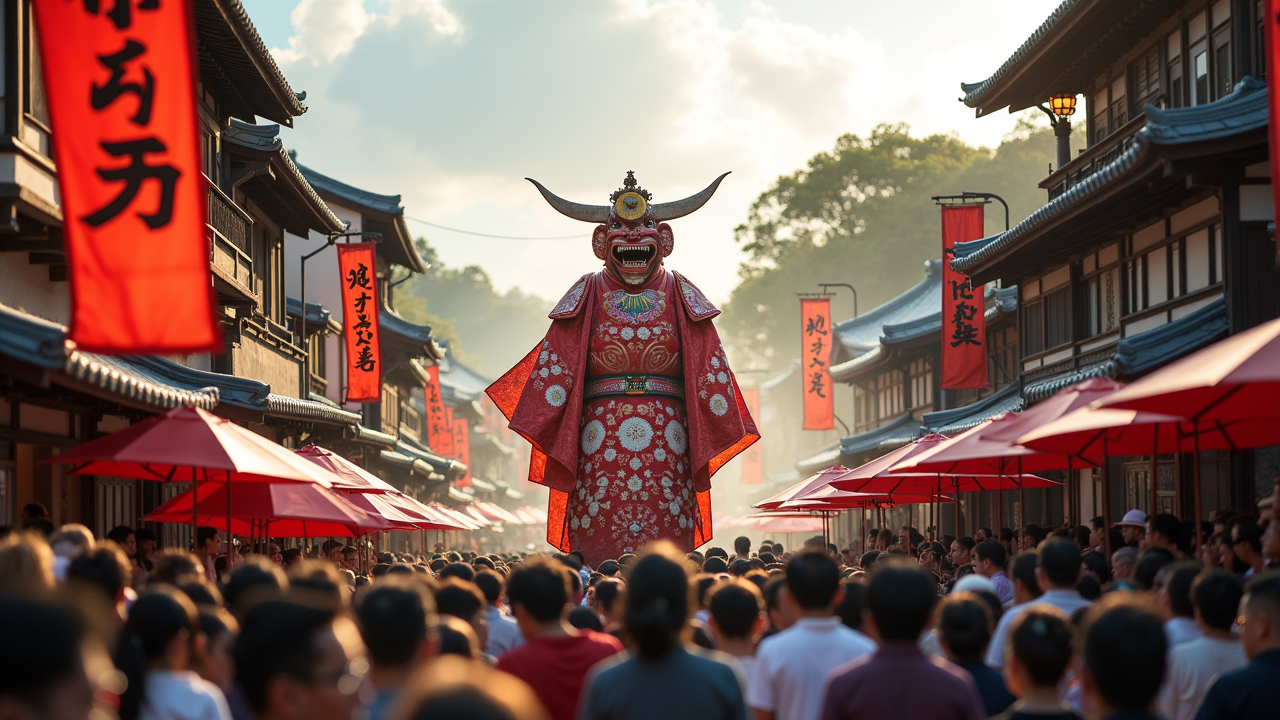Experiencing Japan’s Cultural Festivals in Kyoto
Kyoto, often called Japan’s cultural heart, is a city where tradition and history come alive through its vibrant festivals. If you’ve ever wondered what it feels like to step back in time and witness age-old customs celebrated with enthusiasm, Kyoto’s festivals offer a window into the soul of Japanese culture. From the grand parades of Gion Matsuri to the elegant rituals of Aoi Matsuri, these events showcase centuries of traditions, artisanship, and community spirit.
In this post, we’ll explore the most famous festivals in Kyoto, share tips for visitors, and help you understand the deep cultural significance behind these celebrations. Whether you’re planning a trip to Kyoto or simply interested in Japanese culture, experiencing these festivals will leave you with unforgettable memories and a new appreciation for Japan’s rich heritage.
Introduction to Kyoto’s Festivals
Kyoto’s festivals are more than just events—they are living traditions that have been passed down through generations. Many of these festivals originated as rituals for good harvests, purification, or to honor deities, and over time they’ve evolved into spectacular displays of culture and community.
The city’s location as Japan’s imperial capital for over a thousand years has contributed to the preservation and development of these traditions. Today, festivals like Gion Matsuri and Aoi Matsuri attract thousands of visitors from around the world, eager to experience authentic Japanese culture.
Gion Matsuri: The Grand Festival of Kyoto
History and Significance
Gion Matsuri, held throughout July, is arguably Japan’s most famous festival. It dates back over a thousand years, originally established in the 9th century as a purification ritual to appease the gods and ward off plagues. The festival is deeply rooted in Kyoto’s history and is a celebration of tradition, community, and spiritual renewal.
Festival Highlights
The highlight of Gion Matsuri is the series of elaborate processions featuring beautifully decorated floats called yama and hoko. These floats are masterpieces of craftsmanship, adorned with intricate woodwork, textiles, and ornaments. The floats are paraded through the streets of Kyoto, accompanied by traditional muzik, dancers, and festival participants in historic costume.
During the festival, the streets are filled with food stalls, souvenir booths, and vibrant parades that create a festive atmosphere. The festival also includes traditional events such as the Yamaboko Junko parade on July 17th and 24th, which showcases the grandeur of Kyoto’s cultural heritage.
Tips for Visiting Gion Matsuri
- Plan Ahead: Gion Matsuri draws large crowds, so book accommodations early.
- Explore Side Streets: While the main parade is a must-see, wandering through side streets allows you to see smaller floats and local festivities.
- Wear Comfortable Shoes: Expect walking and standing for long hours.
- Respect Local Customs: Observe the festival traditions and be courteous to festival participants.
Aoi Matsuri: The Elegant Spring Ritual
History and Significance
Held annually on May 15th, Aoi Matsuri is one of Kyoto’s oldest and most elegant festivals, dating back over a thousand years. It is dedicated to the Shinto deity Kamo Wake-ikazuchi and features a grand procession that reflects Kyoto’s aristocratic past.
Festival Highlights
The main event is the imperial-style procession that includes ladies and gentlemen dressed in traditional Heian-era costumes. Participants wear elaborate kimono, court robes, and accessories as they march from the Kyoto Imperial Palace to the Kamo Shrines.
The procession is accompanied by musicians, archers, and dancers, creating an atmosphere reminiscent of the courtly elegance of the Heian period. The festival also includes rituals at the Kamo Shrines, traditional performances, and tea ceremonies.
Tips for Visiting Aoi Matsuri
- Archival Attire: Dress comfortably but consider wearing traditional-inspired clothing for a full experience.
- Arrive Early: Find a good vantage point along the procession route.
- Visit Kyoto Imperial Palace: Explore the historic grounds before or after the festival.
- Experience Local Cuisine: Enjoy Kyoto-style Kaiseki or matcha sweets nearby.
Other Notable Festivals in Kyoto
While Gion and Aoi Matsuri are the most famous, Kyoto hosts numerous other festivals worth exploring:
- Jidai Matsuri (Festival of the Ages): Celebrates Kyoto’s history through a historical parade.
- Hanami (Cherry Blossom Viewing): Springtime picnics under blooming cherry trees.
- Obon Festival: Honoring ancestors with lanterns, dances, and offerings.
Conclusion: Embrace Kyoto’s Cultural Spirit
Attending Kyoto’s festivals offers a rare opportunity to witness Japan’s traditional arts, community spirit, and centuries-old rituals firsthand. These celebrations are not just tourist attractions—they’re integral to the cultural identity of Kyoto and Japan as a whole.
If you plan to visit Kyoto, time your trip to coincide with one of these festivals. Dress appropriately, participate respectfully, and open your heart to the rich traditions unfolding before your eyes. You’ll come away with stories and memories that connect you deeper to Japan’s cultural legacy.
Whether it’s the majestic floats of Gion Matsuri or the elegant procession of Aoi Matsuri, Kyoto’s festivals are a feast for the senses and a true window into Japan’s enduring cultural heritage. Don’t miss the chance to be part of these living traditions—your journey into Japan’s rich cultural tapestry awaits.

Leave a Reply